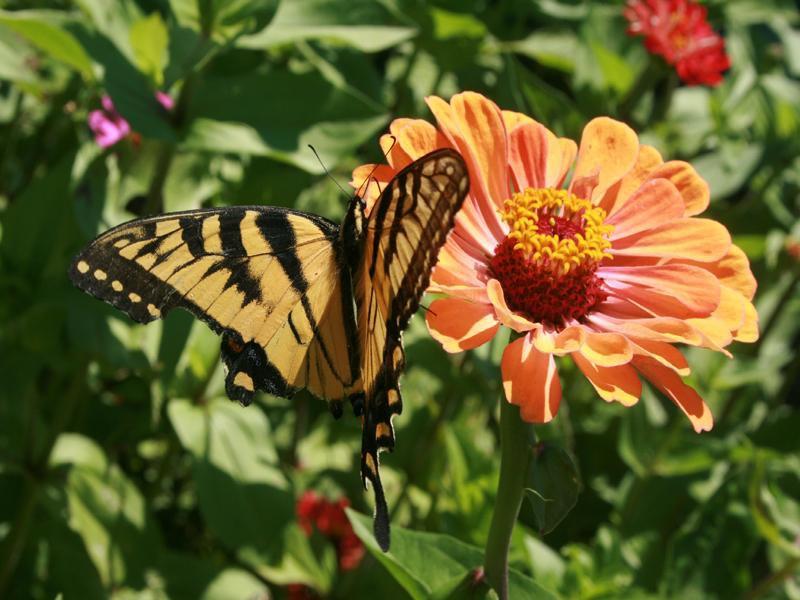
Nature plants most of her seeds in the Fall. In the wild, flowers bloom and ripen all season. They “plant” themselves by dropping their seeds where they are, or sending them off on the wind, or sticking them in clever ways to people and animals, to drop elsewhere.
Many flowers and herbs need at least two months of a winter resting period to germinate. The cold temperatures and damp ground softens and weathers them, triggering the embryo inside. Round about the time spring warms up the earth, it breaks through the seed coat in a search for sun and nutrients.
Advantages to planting in the Fall
Earlier Bloom
Fall-planted flower seed has a chance to “settle” into your site and is all ready to burst into growth in early spring. Fall-planted flower seed often blooms about two weeks earlier than spring-planted seed.

More Time
In the fall, gardeners usually have more time to get the work done than in the busy spring. Many people combine flower seed planting with fall bulb planting.
We can follow nature’s lead. First, have fun choosing seeds from our flower varieties and mixes that are right for your zone and site. Full sun is best for most flowers. You can plant single varieties in masses or try a mix.
We have some wonderful mixes based on height and sun needs, like the Low Grow Mix, and the Partial Shade Mix. We also have four different mixes based on attracting beneficials to your yard, like the lovely Butterfly Garden Mix.
Planting should be done AFTER a killing frost in your area, or after you’re sure the growing season has ended but before the ground freezes (if it does in your area).

Butterfly attracting flowers There is some confusion about this. Some references will tell you to plant flower seeds earlier (August and early September) so the plants can germinate and root before the cold sets in. Then they will sleep tight under mulch until spring. This is not what we’re talking about here. That will not work with seeds that need winterizing.
So, after a hard frost, clear the ground of existing growth. Stay shallow with any tilling you do. Deep tilling tends to bring up more weed seed to the surface.
Spread the seed evenly over the bare soil. One way to do this with tiny flower seeds is to mix it with white builder’s sand (the clean sand sold for childrens’ sandboxes among other things).
Broadcast it by handfuls evenly over your site. The white sand makes it easy to see where you’ve already sprinkled.
Don’t cover the seed, just compress the whole area. Once your seed is sown, it’s important to “squash” the seed into the loose, bare soil. To do this for small areas, just walk over it, and your footprints will do it. Just make sure you compress the entire area.
For larger areas like a meadow, a lawn roller is useful. Even without being filled with water, they do a perfect job of “putting your seeding to bed for the winter.”
Covering lightly with mulch will help keep more weed seeds from planting themselves.
What to Expect in Spring
When the weather warms up again you’ll notice your seed sprouting early. Keep them watered if the weather is dry. The trickiest thing about fall planting is recognizing what is a weed and what is a flower when everything starts to grow. We hope to have photos of our flowers’ seedlings on our website in the future to help you identify them. Meanwhile take a look at this UK seedling site (over 800 photos) for help.
| |
Article Written by: Angie Lavezzo |
|
About the Author: Angie Lavezzo is the former general manager of Sow True Seed. Beyond her professional role at Sow True, Angie's passion for gardening extends into personal hands-on experience, fostering plants and reaping bountiful harvests. |


